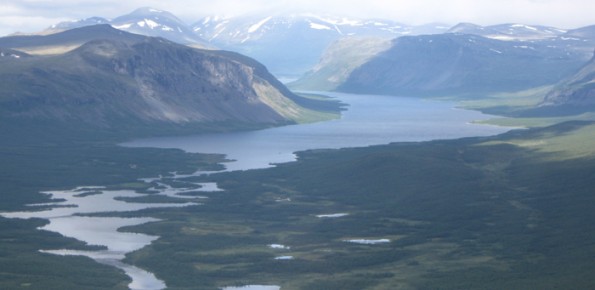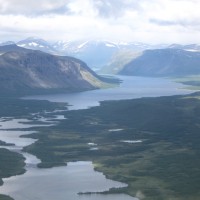Investigation of postglacial fault zones using DInSAR
Postglacial fault zone investigation in Fennoscandia using ERS SAR and ENVISAT ASAR data and Differential Interferometry.

Background
Fennoscandia bears witness of the Pleistocene glaciation in the form of a series of large geological faults. Pärvie which is the longest runs for 150 km. No information is available on its state of activity and no surface deformations data have ever been collected. The length of the fault and its location, make the traditional monitoring techniques unfeasible and ineffective.
Purpose
The purpose of this project is to detect small deformations, around a major young faults, in an area of large postglacial adjustment motion, using advanced interferometric techniques (A-DInSAR)
Methods
- Analysis of the seismological records from the Swedish National Seismic Network
- Analysis of the long-duration observations using GNSS (Global Navigation Satellite Systems) networks
- Differential interferometric analysis (DInSAR)
- Persistent Scatterers Interferometry (PSI)
Results
Promising results have been achieved in the application of the differential interferometry technique over the Pärvie fault. Deformation fringes attributed to crustal deformations have been detected over three segments of the fault showing a continuous very slow uplifting and a slight tilting of the ground at the western flank.
Products
- Mantovani M. and Scherneck H.-G., 2012. Observation of Crustal deformation around the Pärvie Postglacial Fault, Lapland, Sweden, using InSAR techniques, Geophysical Research Abstracts, vol. 14, EGU General Assembly 2012.
- Mantovani M., Scherneck H.-G., 2013. DInSAR investigation in the Pärvie end-glacial fault region, Lapland, Sweden. International Journal of Remote Sensing, 34 (23), pp. 8491-8502.
Conclusions
DInSAR analysis contributed to enlarge the observational database of contemporary measurement of GIA in a global perspective, providing relevant information otherwise impossible to collect. Our findings contribute to the pre-studies of the DAFNE post-glacial fault drilling project, which aims at bring clarity as to the prevailing state of stress in this mega-fault complex.



